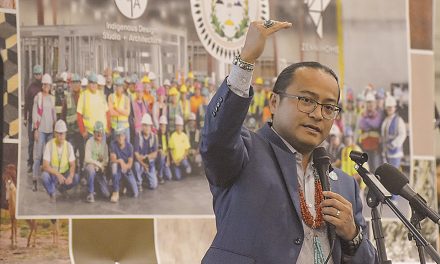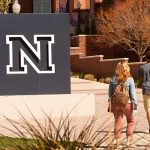
50 Years Ago: Motor Inn opens, begins debate over alcohol sales
The Window Rock Motor Inn opened for business for the first time 50 years ago last week and immediately had an impact on life in the capital of the Navajo Tribe.
With its conference meeting rooms and full-service restaurant, tribal officials as well as delegates of the Navajo Tribal Council could soon be seen there on a daily basis transacting business and meeting with business officials from outside the reservation who wanted tribal support for their ventures. Up until this week, anyone who had business with the tribe had to stay at a motel or hotel in Gallup but now business could be conducted in Window Rock, which was a major convenience for all concerned.
And while tribal and federal law prohibited the consumption of liquor on the reservation, everyone was aware that management at the motel would look the other way if a guest sneaked liquor into his room and didn’t create any problems.
There was still some hope that Raymond Nakai, the chairman of the tribal Council, would go through with his promises to get the laws prohibiting liquor sales relaxed to allow drinks to be served in restaurants on the reservation. When the Holiday Inn was built in Kayenta, plans were made to hold conferences and seminars there, which would not only help the local economy but would save the tribe hundreds of thousands of dollars that was going to hotels and restaurants off the reservation.
Management at the hotel knew that it would be difficult to get any organization to hold meetings in Kayenta if liquor was prohibited since one of the joys of going to a convention was relaxing with business associates over a drink or two at night.
This was especially true in Kayenta since there was no night life that could entertain people who attended the convention. Yes, the convention could sponsor tours to Monument Valley and they could find groups to give visitors a taste of a powwow, but the liquor prohibition would kill the deal with most organizations. Nakai knew this and appeared to be willing to support laws that would allow liquor be served at hotel restaurants in order to increase their business.
The problem was members of the Council. Almost all of the 72 delegates on the Council were raised traditionally and could be considered conservative. The majority were ranchers or had ties to raising livestock.
They were also very much attuned to the feelings of elders in their communities, the people who were more likely than not active members of their chapters. Council delegates would say that while they could understand the economic reasons why liquor sales would benefit the tribe, they could not overrule the wishes of their constituents.
Annie Wauneka, who represented Klagetoh and Wide Ruins on the Council, was once interviewed by a Navajo Times reporter on this subject since she was one of the leaders in the fight against relaxing liquor restrictions.
You would never get the Navajo elders to agree to this, she said, because every family on the reservation has at least one and many have several members they have lost to alcohol abuse. And while allowing liquor to be sold with meals would look harmless, the feeling was that some people would take advantage of the situation and allow people to drink and not require them to buy a meal. Or they would have a cheap meal that would allow them to get drunk and stay within the law. Even members of the Kayenta Chapter, who would seemingly be for changes, were opposed.
While having conventions would indeed increase sales of Indian jewelry and rugs, it would also make roads in the area more dangerous and could lead to more fatal accidents.
There were also rumors, never proven, that officials for the hotel and motel association in Gallup lobbied heavily with delegates of the Council to keep things the way they were. It’s very likely the liquor dealers in Gallup were doing the same thing. In 1978, a study of millionaires in the country showed that Gallup had six millionaires, which was remarkable for a town with a population under 20,000. In fact, Gallup had more millionaires per capita than any other city in the country.
The survey did not say how the millionaires made their money but it was well known that the owners of the biggest houses in Gallup were either owners of car companies or liquor dealers. Most people realized it would be very difficult for a liquor dealer in a town of under 20,000 to become rich, even one that saw his business increase tenfold on weekends because of business from the reservation.
There had to be another reason and many thought that was because of bootleggers. Every community on the reservation had a bootlegger or two. The bigger communities probably had several. The biggest source of their merchandise was liquor dealers in Gallup and Farmington. So it was in everyone’s best interests not to rock the boat and for that reason giving restaurants and hotels the ability to serve liquor with meals never had a chance of passing.








 Highway 264,
Highway 264, I-40, WB @ Winslow
I-40, WB @ Winslow